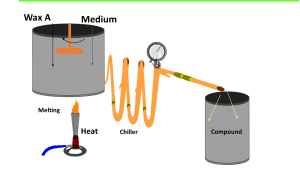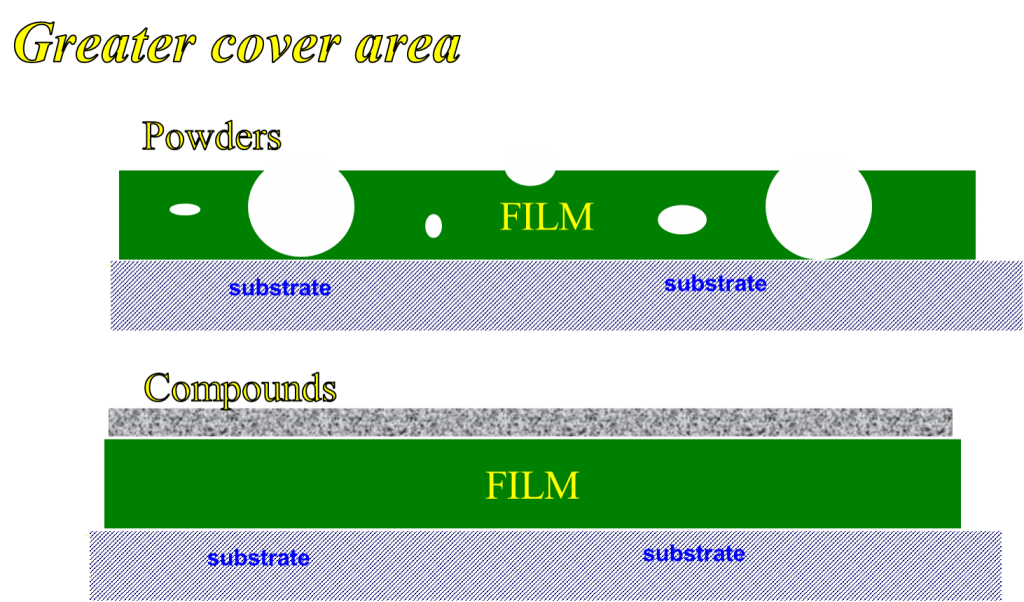Compounds, Dispersions and Emulsions
What are Compounds?

Waxes which have been melted into a liquid media and later recrystallized under controlled temperature conditions.
Wax performance can be defined by their chemical structure and molecular weight.

Waxes are melted in a variety of media such as Linseed Oil, Soya Alkyd Oils, Mineral Oil or varnishes such as Alkyds or hydrocarbons. This combination allows for print applications to achieve a high quality finish while improving processing conditions by ease of incorporation.
| Rub Resistance | The ability to withstand the effects of repeated rubbing and scuffing, and to preserve print integrity and quality. |
| Slip / Non-skid | Control the Coefficient of Friction of surfaces |
| Block Resistance | Blocking is the undesirable sticking together of two printed surfaces when pressed together or placed in contact with each other for an extended period of time. |
| Off-setting | Transfer of Ink from one sheet to another |
| Gloss | Light Reflectance |
| Over-Printability | Ease of printing of layers |
Oil or varnish adds gloss, hardness, and lubricity to ink formulations. Waxes add mar, scuff, and rub resistance, slip, and anti-blocking. We have found that melting and compounding the two into a paste provides a synergy that significantly improves these properties.

Characteristics of Wax Compounds
- Small particle size (<2 µm)
- Tight particle size distribution
- Particles with uniform Morphology
- film uniformity
- excellent dispersion
- paste form for ease of incorporation
- stability, no separation
What are Powder Dispersions?
